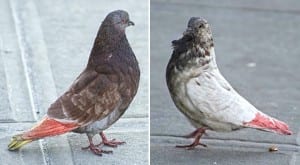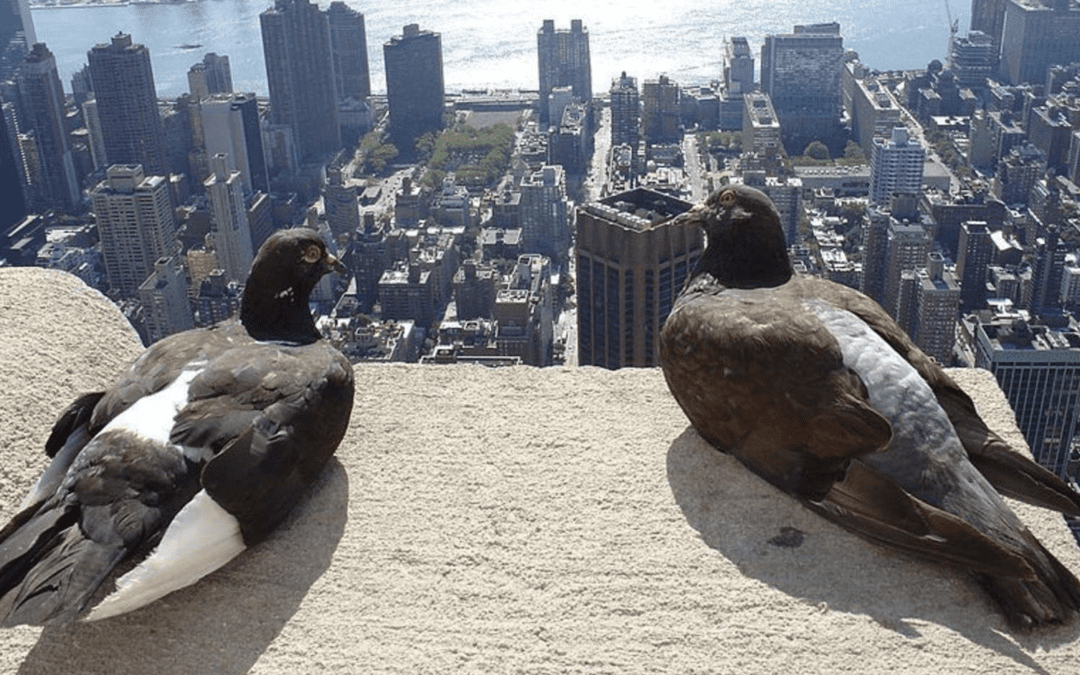
by Pigeon Patrol | Sep 18, 2023 | 4-S Gel Bird repellent, Animal Deterrent Products, Bird Deterrent Products, Bird Law, Bird Netting, Bird Spikes
Being that pigeons are indiscriminate eliminators of all kind of waste they are always seen gathering around the areas where people live. This bird normally splatters droppings and always drops liquid wherever they traveled to. More so, pigeons do not care about cleanliness and always contaminate water. The wastes from these birds are seen to be corrosive which affect everywhere there is their droppings. But the problem with Rhode Island pigeon has resulted to reason why people do not want to have the birds around them.
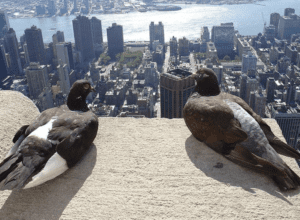
Some the Ways to Get Pigeon Out Of Your Attic
There are many ways to get pigeons out of your attic but the Rhode Island method you applied will determine the result you will get. One of the most effective ways to remove pigeon from your attic is by spicing things up by adding some spices on your attic. Really, whole pigeons do not like spices and sprinkling cayenne pepper, cinnamon pepper and other will help to scare pigeon away from attic. You have to ensure that you are generous with the spices and repeat the application of the spices.
Get Pigeon Out Of Your Attic by Using String Tied One End to Another
Pigeon always like to relax when they gather in a particular place. For that reason, preventing them from getting a well relaxed place will prevent them from occupying a place in your attic. For that reason, what you simply need do in order to avoid Rhode Island pigeon from taking a place in your attic is to use string and tie one to another of a sport where the pigeons normally like to roost. This will prevent the birds from finding a place to balance themselves while they gather in your attic. You can easily do this using waterproof string and you will achieve the result you have been expecting.
Remove Pigeon Out Of Your Attic Using Sticky Chemicals
Pigeons are among the birds that normally love to feel comfortable where they love to perch. For that reason, if you can make it difficult for them to enjoy comfort in a place they gather you will be able to get rid of pigeon from your attic. Simply by spraying sticky chemicals that will make it difficult for the Rhode Island birds to perch you will get the birds away. You will easily buy sticky chemicals you need to scare birds away from your home when you check out the stores near your area.
Use Anti-Roosting Spike Strips to Get Pigeon Out Of Your Attic
Apart from applying sticking chemical to your attic when you want to scare Rhode Island pigeon away from your attic, you can also do same with anti-roosting spike strips. You can easily buy the spike stripes on the hardware store near your street. The setup method for the anti-roosting spikes strips will depend on the manufacturer. For that reason, you have to find out more about the setup method of your anti-roosting spike strip when you consult the manufacturer of the product. You can equally learn the set up tips from the Providence hardware store where you buy the spike strips.
Repel Pigeon with the Use of Natural Pigeon Repellent with Ease
There are natural and store-bought pigeon repellents which you can use to get pigeon away from your attic without passing through stress. One of the natural ways to repel pigeon from your attic is to spray water on the pigeons using water from the garden hose. The Rhode Island pigeons will be uncomfortable to stay in your Providence attic when you frequently spray the birds with water out of your garden hose. You can also exclude pigeon from getting into y our attic by repairing your home and also rebuilding your fences. There are also other kinds of repellent you can easily use to get pigeon away from your home and attic but most of the methods are not really safe. That is why you have to make sure that you select the most suitable and most efficient way to repel the Rhode Island pigeons that have been affecting your home.
Eliminate Food Sources to Get Pigeons Out Of Your Attic
Food sources are among the things that can easily attract Providence pigeons to your attic. For that reason, if you want to get pigeons out of your attic one of the best ways to do that is through removal of food sources. The food sources include grass, barriers as well as cat and dog foods. For that reason, you are going to get the Rhode Island pigeon out of your attic by simply removing all the things that will attract pigeons from your home. These and more are the easier way to prevent pigeon from entering and getting into your home at any point in time.
Source
Pigeon Patrol Products & Services is the leading manufacturer and distributor of bird deterrent (control) products in Canada. Pigeon Patrol products have solved pest bird problems in industrial, commercial, and residential settings since 2000, by using safe and humane bird deterrents with only bird and animal -friendly solutions. At Pigeon Patrol, we manufacture and offer a variety of bird deterrents, ranging from Ultra-flex Bird Spikes with UV protection, Bird Netting, 4-S Bird Gel and the best Ultrasonic and audible sound devices on the market today.
Canada’s top wholesaler for bird deterrent products for twelve consecutive years.
Contact us at 1- 877– 4– NO-BIRD, (604) 585-9279 or visit our website at https://www.pigeonpatrol.ca/
Bird Gone, Pigeon Gone, Pigeon problems, pigeon spikes, 1-877-4NO-BIRD, 4-S Gel, Bird Control, Pigeon Control, bird repellent, Bird Spikes, sonic bird repellent, stainless steel bird spikes, bird spikes Vancouver, Ultra Sonic Bird Control, Bird Netting, Plastic Bird Spikes, Canada bird spike deterrents, Pigeon Pests, B Gone Pigeon, Pigeon Patrol, pest controller, pest control operator, pest control technician, Pigeon Control Products, humane pigeon spikes, pigeon deterrents, pigeon traps, Pigeon repellents, Sound & Laser Deterrents, wildlife control, raccoon, skunk, squirrel deterrent, De-Fence Spikes, Dragons Den, Pigeon, Pigeon Patrol, Pigeons Roosting, Vancouver Pigeon Control, Bird Spikes, Bird Control, Bird Deterrent, Pigeon Deterrent, Surrey Pigeon Control, Pest, Seagull deterrent Vancouver Pigeon Blog, Birds Inside Home De-fence, Pigeon Nesting, Bird Droppings, Pigeon Dropping, woodpecker control, Keep The Birds Away, Birds/rats, seagull, pigeon, woodpecker, dove, sparrow, pidgeon control, pidgeon problem, pidgeon control, flying rats, pigeon Problems, bird netting, bird gel, bird spray, bird nails, bird guard, Pigeon control, Bird deterrents, Pigeon deterrents, Bird control, solutions, Pigeon prevention, Pigeon repellent, Bird proofing, Pest bird management, Pigeon spikes, Bird netting, Humane bird control, Bird exclusion, Urban bird control, Anti-roosting devices, Pigeon removal, Bird barriers
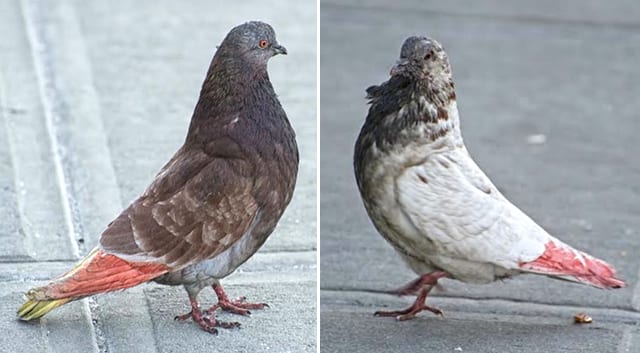
by Pigeon Patrol | Sep 11, 2023 | Bird Netting, Bird Spikes, Doves, history of pigeons, MBCA, pet bird, Pigeon Control
The pigeon problem in Kirkland Lake is so bad, police felt the need to issue a news release this morning warning residents to follow the law when dealing with them.
The town started renting out traps to residents today to capture pigeons, and police say that trappers will be responsible for the disposal of the birds, which includes a ban on throwing them in the garbage for curbside pickup. Successful trappers will instead have to take the pigeons for burial at the town dump.
“The OPP want to inform the residents that it is each individual’s responsibility to educate themselves on this topic and to ensure that they are acting within the laws, regulations and town by-laws,” says Constable Adam Gauthier.
The problem started, says Ashley Bilodeau, Kirkland Lake’s Manager of Planning and Land Development, when a few bird lovers started feeding the pigeons.
“We have a couple of residents that have been obnoxiously feeding pigeons to the point where we have some serious problem areas, so we passed a no-feeding bylaw back in the fall,” she told BayToday. “However, there is one individual who just continues to feed them despite the bylaw and has been charged. There’s been a few charges laid around town but there is one individual who is causing more headaches than normal.”
The fine for feeding is steep at $100, and that’s down from the $250 the town wanted to charge but the province wouldn’t allow it.
“So we’re trying to find different ways to combat the issue because it’s now causing problems to people’s properties and vehicles because there are so many of them.”
Bilodeau says the town has checked with the MNRF and it’s not illegal to kill pigeons although you are required to have a small game licence in order to trap and kill pigeons.
The town has not placed a limit on the number of pigeons people can capture, but police warn folks can’t use their guns to shoot the birds because discharging a firearm is prohibited within the Town of Kirkland Lake,
Bilodeau says poop is the problem.
“They’re also causing damage to buildings by trying to build nesting areas,” she adds. “We’ve got four traps here and people can come in and put in a deposit and take the trap for 10 days, and when they bring it back they get their money back.”
Pigeons were originally bred from the wild rock dove, which naturally inhabits sea-cliffs and mountains according to Wikipedia, so the bird finds the ledges of buildings to be a substitute for sea cliffs.
They have become abundant in towns and cities throughout the world. Due to their abilities to create large amounts of excrement and to carry disease, combined with crop and property damage, pigeons are largely considered a nuisance with steps being taken in many municipalities to lower their numbers or completely eradicate them.
Source
Pigeon Patrol
Pigeon Patrol Products & Services is the leading manufacturer and distributor of bird deterrent (control) products in Canada. Pigeon Patrol products have solved pest bird problems in industrial, commercial, and residential settings since 2000, by using safe and humane bird deterrents with only bird and animal -friendly solutions. At Pigeon Patrol, we manufacture and offer a variety of bird deterrents, ranging from Ultra-flex Bird Spikes with UV protection, Bird Netting, 4-S Bird Gel and the best Ultrasonic and audible sound devices on the market today.
Canada’s top wholesaler for bird deterrent products for twelve consecutive years.
Contact us at 1- 877– 4– NO-BIRD, (604) 585-9279 or visit our website at https://www.pigeonpatrol.ca/
Bird Gone, Pigeon Gone, Pigeon problems, pigeon spikes, 1-877-4NO-BIRD, 4-S Gel, Bird Control, Pigeon Control, bird repellent, Bird Spikes, sonic bird repellent, stainless steel bird spikes, bird spikes Vancouver, Ultra Sonic Bird Control, Bird Netting, Plastic Bird Spikes, Canada bird spike deterrents, Pigeon Pests, B Gone Pigeon, Pigeon Patrol, pest controller, pest control operator, pest control technician, Pigeon Control Products, humane pigeon spikes, pigeon deterrents, pigeon traps, Pigeon repellents, Sound & Laser Deterrents, wildlife control, raccoon, skunk, squirrel deterrent, De-Fence Spikes, Dragons Den, Pigeon, Pigeon Patrol, Pigeons Roosting, Vancouver Pigeon Control, Bird Spikes, Bird Control, Bird Deterrent, Pigeon Deterrent, Surrey Pigeon Control, Pest, Seagull deterrent Vancouver Pigeon Blog, Birds Inside Home De-fence, Pigeon Nesting, Bird Droppings, Pigeon Dropping, woodpecker control, Keep The Birds Away, Birds/rats, seagull, pigeon, woodpecker, dove, sparrow, pidgeon control, pidgeon problem, pidgeon control, flying rats, pigeon Problems, bird netting, bird gel, bird spray, bird nails, bird guard, Pigeon control, Bird deterrents, Pigeon deterrents, Bird control, solutions, Pigeon prevention, Pigeon repellent, Bird proofing, Pest bird management, Pigeon spikes, Bird netting, Humane bird control, Bird exclusion, Urban bird control, Anti-roosting devices, Pigeon removal, Bird barriers
y/bird nails/bird guard
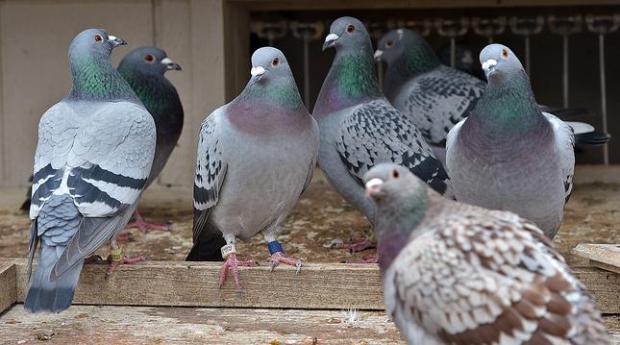
by Pigeon Patrol | Sep 7, 2023 | 4-S Gel Bird repellent, Animal Deterrent Products, Bird Deterrent Products, Bird Law, Bird Netting, Bird Spikes
Pigeons are always on the lookout for a source of food and buildings with plenty of high nooks and crannies to roost and nest in, and your factory might just fit the bill.
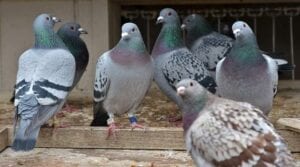
But if pigeons get into your factory, it’s a serious problem. These pest birds and their guano (poo) carry and spread some nasty diseases, and they can also damage property. This is bad news for any business, but if food is manufactured, packaged, and stored in your factory, it can be disastrous.
Before your reputation and your profits take a serious hit, read our advice on how you can keep pigeons out of your factory.
How to prevent pigeons from getting into your factory
First, eliminate any sources of food
Any sources of food will be very attractive to pigeons, and eliminating them will make your factory less desirable to roost or nest in. Keep your factory scrupulously clean and don’t leave food ingredients or waste lying around, inside or outside of the premises.
It’s also a good idea to talk to nearby businesses if their poor waste management or housekeeping practices are attracting pest birds to the vicinity.
Second, use deterrents
When you are trying to prevent pigeons from nesting or roosting in or on your property, deterrents like bird spikes, bird wire, and netting can be effective at keeping them at bay.
Third, fix up your factory
If there are holes in your factory roof or walls that you haven’t got around to fixing, you could inadvertently be providing pigeons with the perfect nesting place. Make sure you fix them up-deterring pigeons is all about making your factory much less attractive to them.
Finally, deal with the guano
As we mentioned earlier, pigeon droppings can contain some harmful bacteria, so we would recommend that you don’t try to clean it up yourself.
If pest pigeons have made a mess of your factory, call in the professionals. We will blast away guano with the right equipment and products so your premises is clean, safe, and hygienic again.
Do I need professional pigeon control for my factory?
As birds are protected by the Wildlife and Countryside Act 1981, it’s illegal to poison or shoot them if you don’t have a license. If you put poison down, you could harm other birds and end up in legal trouble. And not only that, if you’re a food business, you won’t be able to use toxic bird control methods anyway as you could contaminate your product.
If you hire professional pest control, you can get your pest problem dealt with fast. We can deal with any existing infestation, install effective bird-proofing and deterrents, and give you expert advice on preventing any problems in the future.
To protect your business, customers, and your reputation, professional pigeon control is your best bet.
Source
Pigeon Patrol Products & Services is the leading manufacturer and distributor or bird deterrent (control) products in Canada. Pigeon Patrol products have solved pest bird problems in industrial, commercial, and residential settings since 2000, by using safe and humane bird
deterrents with only bird and animal friendly solutions. At Pigeon Patrol, we manufacture and offer a variety of bird deterrents, ranging from Ultra-flex Bird Spikes with UV protection, Bird Netting, 4-S Bird Gel and the best Ultrasonic and audible sound devices on the market today.
Voted Best Canadian wholesaler for Bird Deterrent products ten years in a row.
Contact us at 1 877-4-NO-BIRD,(604) 585-9279 or visit our website at www.pigeonpatrol.ca
Pigeon/Pigeon Patrol / Pigeons Roosing / Vancouver Pigeon Control / Bird Spikes / Bird Control / Bird Deterrent / PIgeon Deterrent / Surrey Pigeon Control / Pest / Seagull deterrent / Vancouver Pigeon Blog / Birds Inside Home / Pigeons in the cities / Ice Pigeons / What to do about pigeons / sparrows, Damage by Sparrows, How to Keep Raccoons Away, Why Are Raccoons Considered Pests / De-fence / Pigeon Nesting / Bird Droppings / Pigeon Dropping / woodpecker control / Professional Bird Control Company / Keep The Birds Away / Birds/rats/seagull/pigeon/woodpecker/dove/sparrow/pidgeon control/pidgeon problem/pidgeon control/flying rats/pigeon problems/ bird netting/bird gel/bird spray/bird nails/bird guard
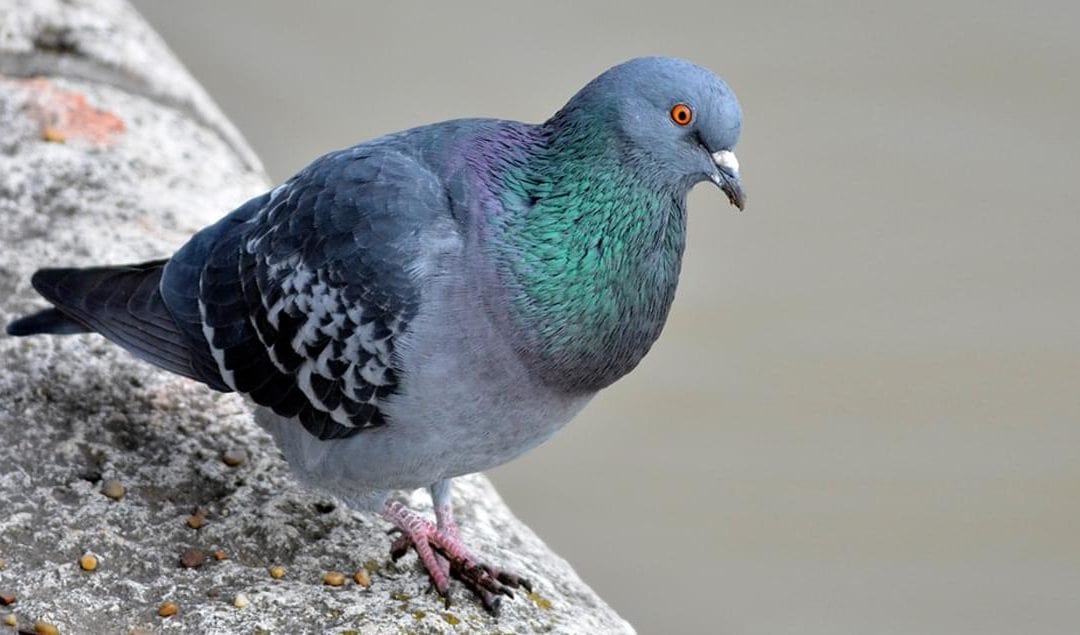
by Pigeon Patrol | Sep 7, 2023 | 4-S Gel Bird repellent, Animal Deterrent Products, Bird Deterrent Products, Bird Law, Bird Netting, Bird Spikes
The development of cities and urban sprawl has made room for wildlife inhabiting human environments. Among birds, feral pigeons (Columba livia domestica) are often present in large numbers in the cities. Problems related to pigeon occurrence result in economic loss and health issues for humans. There are different methods of controlling pigeon populations in urban areas. In this study, we compared three techniques that can be used for pigeon pest control. In two urban industrial sites in Hungary, we used trapping, falconry (in both Study Area 1 and 2) and mist-netting (only in Study Area 2) to remove pigeons. We compared the effectiveness and limitations of each method. Our results show that over 105 days in Study Area 1, we managed to remove 173 individual pigeons. We did not find a significant difference between the effectiveness of trapping or falconry. In Study Area 2, the overall number of pigeons removed was 1412 over a period of 150 days. There, we managed to catch significantly more birds by netting than by trapping or falconry, but the latter two did not differ statistically. We recommend a combination of techniques for pigeon control. Mist-netting can be the most effective way for direct pigeon removal, whereas trapping is an easier but less efficient method to catch pigeons. Falconry is the least efficient in pigeon catching and requires the most investments, but the bird of prey may chase the pigeons away for a short time.
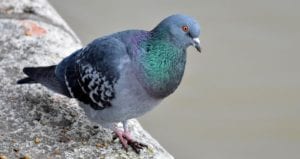
Source
Pigeon Patrol Products & Services is the leading manufacturer and distributor or bird deterrent (control) products in Canada. Pigeon Patrol products have solved pest bird problems in industrial, commercial, and residential settings since 2000, by using safe and humane bird
deterrents with only bird and animal friendly solutions. At Pigeon Patrol, we manufacture and offer a variety of bird deterrents, ranging from Ultra-flex Bird Spikes with UV protection, Bird Netting, 4-S Bird Gel and the best Ultrasonic and audible sound devices on the market today.
Voted Best Canadian wholesaler for Bird Deterrent products ten years in a row.
Contact us at 1 877-4-NO-BIRD,(604) 585-9279 or visit our website at www.pigeonpatrol.ca
Pigeon/Pigeon Patrol / Pigeons Roosing / Vancouver Pigeon Control / Bird Spikes / Bird Control / Bird Deterrent / PIgeon Deterrent / Surrey Pigeon Control / Pest / Seagull deterrent / Vancouver Pigeon Blog / Birds Inside Home / Pigeons in the cities / Ice Pigeons / What to do about pigeons / sparrows, Damage by Sparrows, How to Keep Raccoons Away, Why Are Raccoons Considered Pests / De-fence / Pigeon Nesting / Bird Droppings / Pigeon Dropping / woodpecker control / Professional Bird Control Company / Keep The Birds Away / Birds/rats/seagull/pigeon/woodpecker/dove/sparrow/pidgeon control/pidgeon problem/pidgeon control/flying rats/pigeon problems/ bird netting/bird gel/bird spray/bird nails/bird guard

by Pigeon Patrol | Jul 26, 2023 | Bird Spike, Bird Spikes, Columbidae, Doves, history of pigeons, MBCA, pet bird, Pigeon Control, Pigeon Predators, Pigeon Spikes
You could be forgiven for thinking that pigeons ever lived in the wild. They have been such a constant presence in human cities for so long that they are seen as urban creatures to this day. However, their commonness doesn’t mean they are harmless. Pigeons can be just as troublesome as other common pests, and they can be even more dangerous than you probably realize. Learning how you can prevent a pigeon infestation in your property can protect you from these problems.
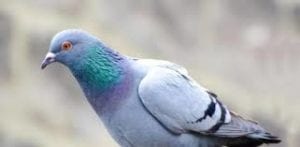
Common But Not Harmless
Pigeons are so common in urban America that most people don’t pay them any real attention. Some people even feed them. It’s this relationship to humans that has allowed pigeons to thrive and reveal their true colors as truly harmful birds. But pigeons haven’t always nested in cities and suburbs, they descend from cave birds that occupied rugged coasts and mountains. Some pigeons still migrate to these natural areas to breed but their reliance on human waste for food and industrial buildings for shelter means pigeons are a permanent fixture in modern life. But make no mistake, pigeons are responsible for the same kinds of damage and danger that other pests are known for.
Damage & Danger Caused By Pigeons
Even though people consider them harmless birds, pigeons have proven time and time again that they are more than just birds picking up breadcrumbs. Pigeons can lead to all of the following problems for humans:
- Disease. Pigeons are known as vermin for a reason, they are carriers of dangerous and fast-spreading diseases like hepatitis and salmonella.
- Parasites. Even if pigeons themselves aren’t carriers of diseases, they can carry ticks and lice that are also harmful and known to transmit pathogens.
- Damage. Pigeons aren’t just a health risk, but a property risk too. With their habit of nesting inside of electrical utilities and roosting inside of people’s roofs, pigeons can cause direct damage and interference to the common amenities of daily life.
- Feces. Not only can pigeons cause damage with their nests, but they can also cause damage to their poop. The highly corrosive droppings can chew through concrete and even metal — not to mention the unpleasant sights and smells that result.
Keeping Pigeons Off Your Property
Since pigeons in Owensboro are everywhere, it’s important to take steps to make your property less attractive to flying invaders in search of shelter or food. Here are some steps you can take:
- Don’t feed them. First and foremost, everyone should take heed of this tip. The more people feed pigeons, the more their populations grow. If you feed them on your property, either directly or via bird feeders, you’re simply inviting them to cause more problems.
- Landscaping. Keeping trees trimmed away from any structures will prevent pigeons from having an easy place to land that’s right next to your property.
- Anti-roosting. There is a wide range of spikes, grates, and covers that are available for commercial and residential properties, which prevent pigeons from landing or nesting.
Take Proper Action
Because pigeons are such a common part of modern life, anyone can fall victim to the problems they cause. Once they’ve taken hold in an area, pigeon populations can grow simply massive. Rather than try to deal with prevention and removal on your own, enlist the help of trained experts who can assist you. At Action Pest Control, our friendly staff can provide you with even more tips to prevent and spot the signs of pigeon damage. If our inspections reveal an infestation, we’ll work to get rid of it and work with you on steps for future prevention.
Don’t get complacent when it comes to pigeons, act today.
Source
Pigeon Patrol Products & Services is the leading manufacturer and distributor or bird deterrent (control) products in Canada. Pigeon Patrol products have solved pest bird problems in industrial, commercial, and residential settings since 2000, by using safe and humane bird
deterrents with only bird and animal friendly solutions. At Pigeon Patrol, we manufacture and offer a variety of bird deterrents, ranging from Ultra-flex Bird Spikes with UV protection, Bird Netting, 4-S Bird Gel and the best Ultrasonic and audible sound devices on the market today.
Voted Best Canadian wholesaler for Bird Deterrent products ten years in a row.
Contact us at 1 877-4-NO-BIRD,(604) 585-9279 or visit our website at www.pigeonpatrol.ca
Pigeon/Pigeon Patrol / Pigeons Roosing / Vancouver Pigeon Control / Bird Spikes / Bird Control / Bird Deterrent / PIgeon Deterrent / Surrey Pigeon Control / Pest / Seagull deterrent / Vancouver Pigeon Blog / Birds Inside Home / Pigeons in the cities / Ice Pigeons / What to do about pigeons / sparrows, Damage by Sparrows, How to Keep Raccoons Away, Why Are Raccoons Considered Pests / De-fence / Pigeon Nesting / Bird Droppings / Pigeon Dropping / woodpecker control / Professional Bird Control Company / Keep The Birds Away / Birds/rats/seagull/pigeon/woodpecker/dove/sparrow/pidgeon control/pidgeon problem/pidgeon control/flying rats/pigeon problems/ bird netting/bird gel/bird spray/bird nails/bird guard

by Pigeon Patrol | Jul 26, 2023 | 4-S Gel Bird repellent, Animal Deterrent Products, Bird Deterrent Products, Bird Law, Bird Netting, Bird Spikes, Columbidae, Doves
How to Deter Birds From the Garden
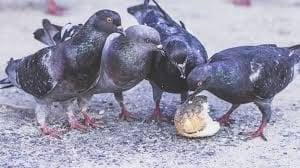
Birds are not picky eaters. They can feed on a number of things: seeds, grains, fruit, breadcrumbs, worms, and more.
Bird control is a hard job, especially if you have a vegetable garden. You’d want to keep birds as far away as possible. Even though it’s not easy, there are a few things you can do.
- Make a scarecrow or use decoy hawks and owls. Also, fake snakes could scare some of the birds.
- Use old CDs as shiny reflective objects to scare the birds. Hang a few of them every couple of meters around your garden.
- Buy or make bird nettings from cord or wire to protect your crops.
- Plants to distract them. You want to keep your crops intact and you’ve lost all hope of keeping the birds away? You can distract them by planting other seductive plants away from your vegetables. Plants like buckwheat, sunflowers, or some berries can be used to attract pigeons and other birds to the opposite side of your garden.
How to Keep Pigeons Away From Bird Feeders
Pigeons are a typical example of a bully bird that doesn’t allow smaller birds to get food. They are larger than most birds you can find in urban areas and this gives them some advantage in the race to get the food people leave behind.
You can keep pigeons and other bully birds away from your bird feeders by making it hard for them to reach it. How? By enclosing the bird feeder with hardware cloth with openings big enough so only smaller birds can get through and feed (5cm should be more than enough).
There are caged-in trays or tube bird feeders sold in garden or hardware stores you can purchase. The tray or tube is placed several centimetres inside of the cage and it makes it difficult for larger bully birds to eat the seeds.
Some bird species, like pigeons, the European starling, house sparrows, feed on the ground. If you remove all food sources from the ground and make a hanging bird feeder under a small shelter, they may get scared to get under the cover. With the lack of food, they will soon stop coming.
How to Get Rid of Pigeons With Poison
Poisoning pigeons and other birds is not recommended. There’s no need to kill the birds. You can simply take some measures to keep them away from your home or business building. A dead pigeon, filled with poison, laying somewhere in your garden might cause you more problems than a live one. Plus, you should consider the chance of poisoning other animals alongside the pigeons. Refrain from using poison as a bird control method, please.
How to Get Rid of Pigeons in Your Garden With Sound
Sounds can prove to be one of the most effective ways to keep birds away. You will need to invest some money to do it the right way but it will be worth it. There are a number of sounds that can do the trick.
Audible repellers produce frightening bird sounds that scare pigeons and other birds. There are different sounds – distressed cries of birds, shrieks of predator birds. The devices can be bought in most gardening stores.
Ultrasonic repellers emit high-frequency sounds that people cannot hear. The sounds are at a specific frequency targeted at birds.
How to Get Rid of Pigeons From Trees
Gather aluminium plates, mirrors, and other shiny objects. Hang them on your trees and they’ll create movements and reflect the sunlight. Thus they will scare off the pigeons and other birds from roosting on your trees.
Put a predator bird statue on the tree to scare the pigeons off. Most professional exterminators rely on this method as well.
Wind chimes can also scare pigeons away with the sound and movement they make, but if the pigeons get used to them they will not hesitate to roost on your trees.
Natural Pigeon Repellents and Control Methods
You have to be careful with the homemade repellents. Birds, especially pigeons are smart animals and can see through your scarecrows and tricks.
Homemade pigeon repellents and other repelling methods should be combined with preventive methods for full effect and protection.
Other natural ways to deal with bird control
Remove food and water sources. Keeping your property clean from seeds, grains and other food remains is a convenient way to have birds and pigeons skip your home and go to your neighbour’s’ yard. This can be done by regularly sweeping floors, keeping your garbage in the garbage can with a closed lid on it.
Gardens should be protected as well, either with decoy predator birds statues, sprinklers, sound repellents, or nets.
Make sure you don’t leave standing water anywhere around your home.
Removing the nest is essential because you are putting your home at risk of getting infested with bird mites.
Homemade Pigeon Repellents
As mentioned above, there are a number of bird repellents that can get the job done. But if you wish to deal with the issue without having to put a fake owl or spikes on your roof, you can try to make some homemade repellents.
1) Repel pigeons with honey – Applying a thin layer of honey to your roof or balcony will inconvenience birds and they won’t roost there. Honey’s stickiness will keep them away as birds do not like sticky surfaces. You can use other sticky products as well. You may have to reapply the sticky substance from time to time because it will wear off.
2) Hose the birds. You can instal automatic sprinkles on your roof or balcony to spray them when they land. Or you can do the work when you notice them. Hosing them a couple of times should be enough to teach them a lesson and keep them away.
3) Spicy pigeon repellent
Pigeons and other birds do not like spices. Which makes it a fantastic natural repellent for all kinds of birds.
4) Pepper powder can be used to repel pigeons from your balcony and roof. Sprinkle more of it on their roosting places and in other places they may roost. You can use black pepper, cayenne pepper or cinnamon powder to keep the pigeons off your property. You will have to reapply it after rainy or windy days.
5) Chilli powder is another spicy repellent that you can use. Throw chilli solution in the birds’ roosting places and watch how they stop coming back. Reapplying it may be also necessary after windy and rainy days. The chilli is also unpleasant to the pigeons and will drive them away from your home.
Take measures to keep birds away from your home now or call an expert to do it for you.
Source
Pigeon Patrol Products & Services is the leading manufacturer and distributor or bird deterrent (control) products in Canada. Pigeon Patrol products have solved pest bird problems in industrial, commercial, and residential settings since 2000, by using safe and humane bird
deterrents with only bird and animal friendly solutions. At Pigeon Patrol, we manufacture and offer a variety of bird deterrents, ranging from Ultra-flex Bird Spikes with UV protection, Bird Netting, 4-S Bird Gel and the best Ultrasonic and audible sound devices on the market today.
Voted Best Canadian wholesaler for Bird Deterrent products ten years in a row.
Contact us at 1 877-4-NO-BIRD,(604) 585-9279 or visit our website at www.pigeonpatrol.ca
Pigeon/Pigeon Patrol / Pigeons Roosing / Vancouver Pigeon Control / Bird Spikes / Bird Control / Bird Deterrent / PIgeon Deterrent / Surrey Pigeon Control / Pest / Seagull deterrent / Vancouver Pigeon Blog / Birds Inside Home / Pigeons in the cities / Ice Pigeons / What to do about pigeons / sparrows, Damage by Sparrows, How to Keep Raccoons Away, Why Are Raccoons Considered Pests / De-fence / Pigeon Nesting / Bird Droppings / Pigeon Dropping / woodpecker control / Professional Bird Control Company / Keep The Birds Away / Birds/rats/seagull/pigeon/woodpecker/dove/sparrow/pidgeon control/pidgeon problem/pidgeon control/flying rats/pigeon problems/ bird netting/bird gel/bird spray/bird nails/bird guard




